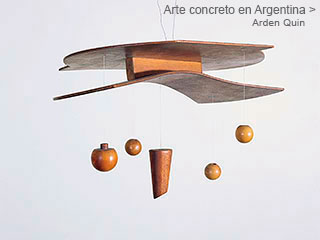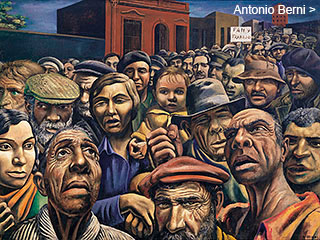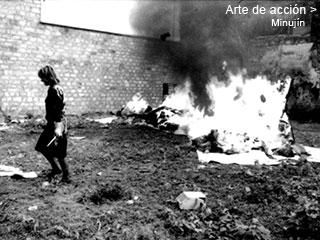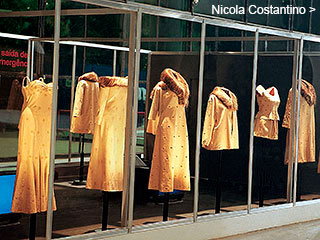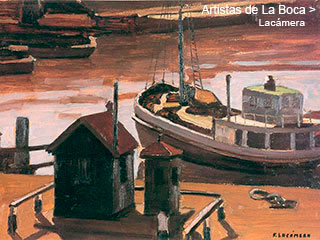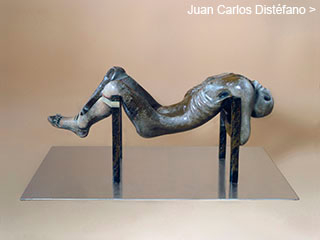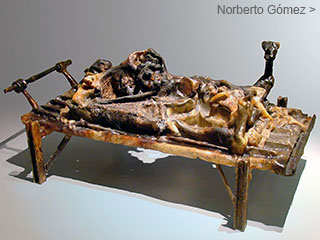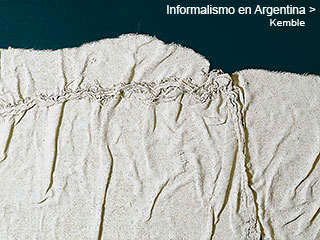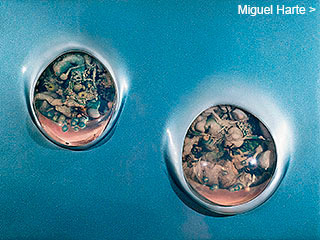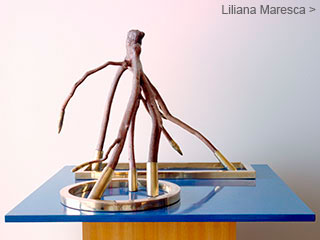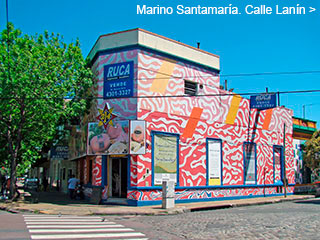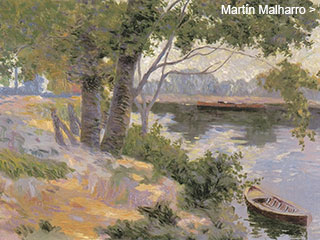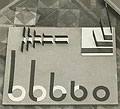Menú
Algunos dossiers
Norberto
Gómez
Gómez
by
Adriana Lauria and Enrique Llambías
March 2006
March 2006
This dossier covers forty years of Norberto Gómez’s work, from his minimalist constructions of 1966 and 1967 to the anti-monuments he produced in polyester and bronze in the nineties. In between, his series of “guts”, organic remains, weapons and “plasters” punctuate a long career that has enriched the Argentine art scene.
About Norberto Gómez
Each of the periods in Norberto Gómez’s work marks an intense moment in contemporary Argentine sculpture. In his first pieces, exhibited in 1967, extreme rigour and combinatorial skill are paramount. At the time, he was producing objects whose geometry had links with optical-kinetic art, where virtual movement is suggested by sequences that show the displacement of shapes. The following year, he employed similar techniques in his minimalist constructions, which deal with mutations from two to three dimensions, and demand a mentally active engagement from the viewer in order to complete the information offered by the objects.
In the ’70s he took part in the realism that characterised the art of the times. His cylinders and parallelepipeds, dented as if they had melted or liquefied, are no longer abstract. They are metaphors of degradation and of the precariousness of existence, a theme which he will later explore, with literal rawness, in his series of guts and organic remains, first exhibited in 1978. In his work from the early ’80s, which are hallucinatory and distressing, he dreams up monster-like creatures, gaunt and mutilated, its bones dripping with gossamery shreds that link them to the human.
Beyond responding to existential motivations, this group represents the fragility of the body in a time of torture and death – as triggered by state terrorism, the effects of which, thirty years on, still shake the foundations of Argentine society.
more


